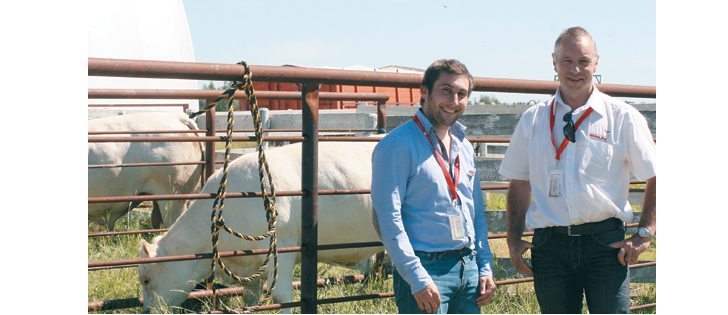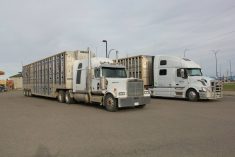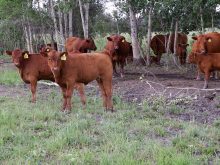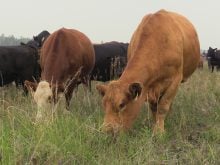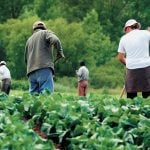BOWDEN, Alta. — Michel Baudot and Clement Perrodin raved about their first rodeo, which they attended while visiting the Ponoka Stampede.
However, the two French Charolais enthusiasts were not quite so sure about the Canadian style of cattle.
Charolais is known as the great white breed, but Baudot and Perrodin found it jarring to see colour ranges from white to black.
“Everything has been OK, but sometimes the colour is strange for the French. No one has brown ones,” said Baudot, president of the French Charolais Society.
Read Also
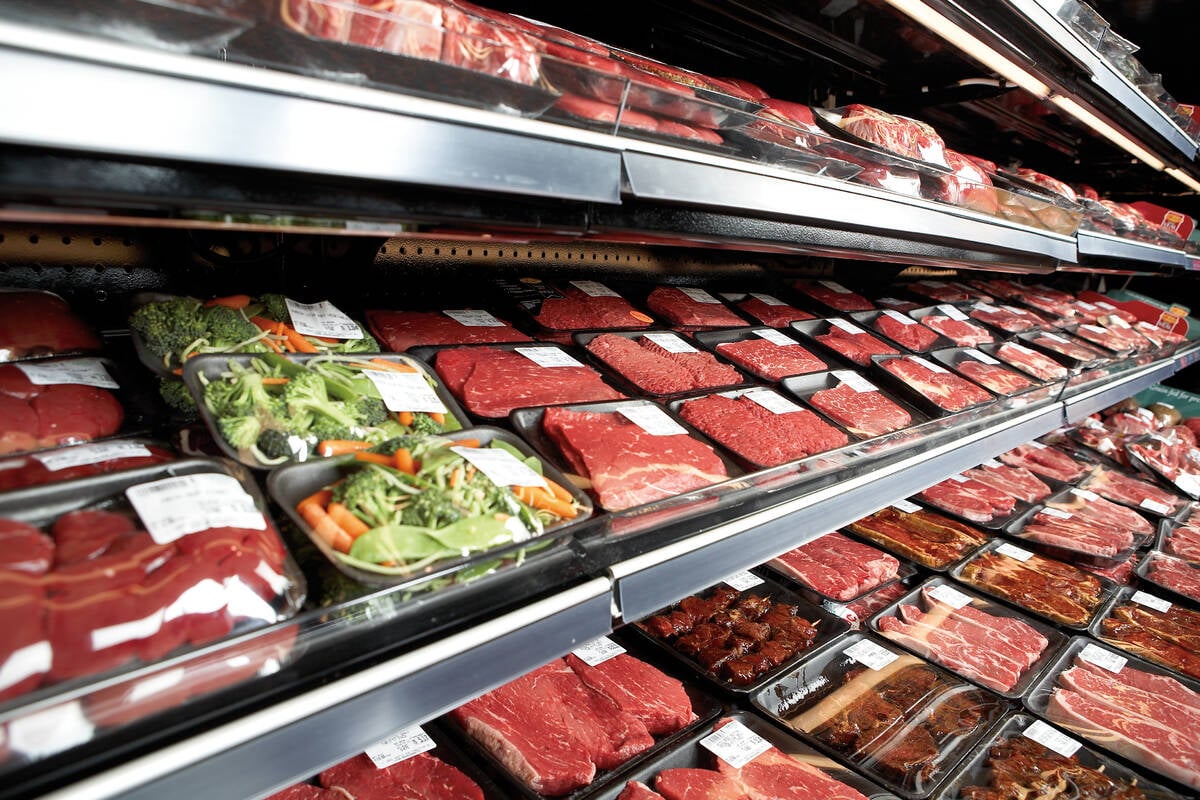
Meat and plant protein are both good for human health – McMaster study
A study from McMaster University in Hamilton, Ont. has found that meat consumption doesn’t increase the risk of death.
“Everywhere in the world and you speak about Charolais, people say, ‘oh yes, the white cow.’ ”
The pair was travelling in Western Canada as part of a world Charolais tour with 60 breeders representing nine countries.
Baudot has been bemused during his past visits to Canada to see the changes the Continental cattle have undergone since they arrived in North America from France nearly 60 years ago. Maine Anjou, Limousin and Simmental are now black, but in Europe they have maintained their red hides.
“Colour is particular to the breed,” said Perrodin, who is the technical adviser with the Charolais society.
Charolais, which are found in 70 countries, were crossed with British cattle when they came to Canada. It changed the appearance and performance of the national herd by adding more meat and faster growth rates.
Baudot said the Canadian version appeared to be good milk producers and muscular but were different from those on his farm in Burgundy.
“The money comes from the meat in France, and we need cattle with more muscle. We don’t use growth hormones,” he said.
Charolais is the No. 1 breed in France with 1.6 million registered cows, followed by Limousin at about one million. The average purebred herd is 60 cows, but some are as large as 500, said Perrodin.
Many are on mixed farms and can graze nearly year round because of the mild climate. Retail beef is sold as Charolais, and its source is identified on the retail label.
“When the consumer buys meat, he buys the breed, he wants to know if it is a male or a female,” Baudot said.
“There is a lot information on a piece of meat.”
Retail beef prices are high in France, but agriculture is struggling.
The beef herd is shrinking and cattle prices are low. European Union agriculture support programs are gone, and input costs have increased.
Spain, Italy and Greece were once major customers for live French cattle. However, all are struggling economically, which has affected beef producers.
“We hear everywhere that global demand for meat is increasing, so we hope the price will go up in France, but at the moment it isn’t,” Perrodin said.
The situation is similar in the United Kingdom, said Ben Harmon, who farms beside the last station of the Metropolitan subway line in London.
His family farm is 113 years old, and his grandfather was the first to introduce Charolais cattle to England in 1962 by importing semen that was used on South Devon cows. He campaigned to bring in full French females and was putting together a herd by 1963.
“The government was very resistant to it,” Harmon said. “Their view was, ‘why would anyone want to bring anything in that wasn’t British?’ ”
The breed suffered a setback when it lost market share to the Limousin breed and struggled to get over problems with calving. The breed has since turned a corner, and Charolais bulls are popular again.
However, the beef business and agriculture are struggling. The price of beef is high in stores, but the returns do not flow back to farmers.
The national cow herd has declined by 200,000 in the last year, which means the demand for bulls is down by as many as 5,000 across all breeds.
A large share of the Charolais semen market used to go to the dairy business, but that sector is struggling as well, so they are breeding fewer cows.
“It is going to be a very difficult year for farmers, and I think a lot of people are going to hit the wall this year,” Harmon said.
The average purebred cow herd in the U.K. is seven cows, but many producers also maintain a commercial herd. Harmon has 43 purebred cows and has also developed a branded beef program he named Chagyu.
Wagyu semen is used to breed Charolais heifers, and he sells the product to a local butcher, pubs and restaurants as locally raised London beef.
A stickler for detail, Harmon feeds the crossbreds on grass and finishes them on grain for the final 60 days. Low stress management is practised, which includes loading cattle on a trailer and driving them around so they get used to transport long before they go to slaughter.
Beef economics in North America are a different story.
Mexico will host the next world Charolais meeting, and for the first time in decades the beef business is profitable in that country, said Gregorio Farias, manager of the Charolais Charbray Herd Book of Mexico.
Three years of drought have broken and the beef sector is in recovery.
“Nowadays, it is a very good business to be in,” he said.
Charolais arrived in Mexico around 1930 and has grown into the second largest beef cattle association with more than 440 members and 12,000 pedigrees registered annually.
A portion of the cattle are crossbred to produce the Charbray, which is 5/8 Charolais and 3/8 Zebu.
“This is a very young breed that is going up in numbers. It works very well in the tropical zones,” he said.
The breed is holding its own in Canada, said association manager Mel Reekie. The cattle have been here since the mid-1960s, although commercial cattle producer Wayne Malmberg of Alberta brought crossbreds to his ranch in 1953.
Bull demand has been strong recently, and more young people have joined as members. The association has also embarked on a three-year study of residual feed intake and genomics in co-operation with the University of Alberta’s Roy Berg Kinsella Research Ranch.
The intention is to develop enhanced expected progeny differences statistics for performance traits such as growth and calving ease, Reekie said.
“We are taking a conservative approach so when we release numbers, they are clean and of value.”


